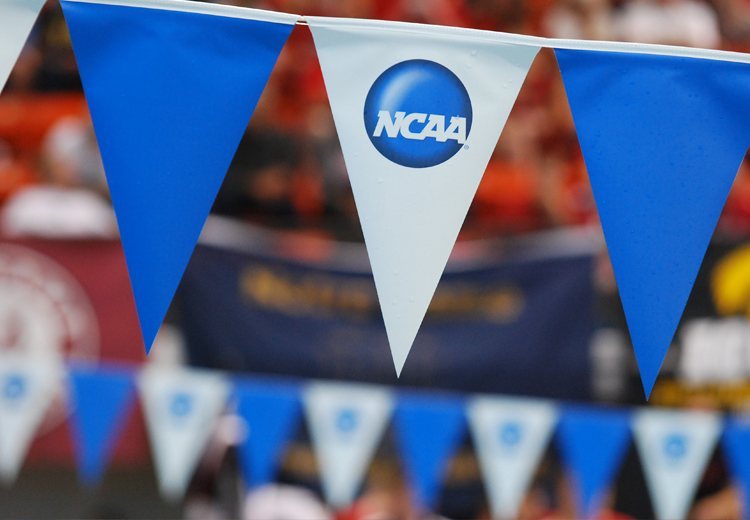A new NCAA study found that student-athlete mental health concerns are down since the pandemic, but athletes still perceive a lack of institutional support.
Student-athletes reported a major decrease in feeling comfortable approaching coaching staff concerning mental health. These numbers were a decrease of 9 percentage points for women’s sports and 8 points from men’s sports compared to pre-pandemic surveys.
Women student-athlete participants saw a drop from 72% in 2015 to 59% in 2022-23 for believing their coaches care about their mental health wellbeing. Men student-athlete participants also dropped from a peak of confidence of 75% in 2019 to 70% in 2022-23.
Student-athlete comfort for approaching coaches with mental health problems is even lower. Men student-athletes dropped from 62% in 2019 to 54% in 2022-23 and women dropped from 49% in 2019 to 40%.
Comparatively, 71% of male and 60% of female athletes in 2022-23 reported feeling comfortable talking with coaches about physical health issues.
This study comes in the wake of the NCAA’s new mental health standards for Division I schools voted on in April 2023. Division I schools will be required by the NCAA to attest that they follow their mental health best practices, which include:
- clinically licensed practitioners giving mental health care
- procedures for identification and referral
- pre-participation mental health screening
- educating student-athletes and coaches
The new standards will take effect in August 2024.
The study had NCAA faculty athletics representatives collect information from 23,272 student-athletes from October 2022 to June 2023.
Mental Health Concerns
While student-athletes felt less comfortable reporting mental health concerns to coaches, they also experienced a decrease in mental health concerns compared to the peak of the pandemic.
Men student-athlete participants reported a decrease from 25% feeling overwhelmed constantly in Fall 2021 to 17%. Consistent mental exhaustion also decreased from 22% to 16%.
Women student-athlete participants saw less significant decreases, with all percentages less than a 5% decrease from Fall 2021. 44% of women athlete participants reported feeling constantly overwhelmed compared to 47% in Fall 2021. Participants also reported a decrease in feeling constantly mentally exhausted from 38% in Fall 2021 to 35%.
The main factors negatively impacting student-athlete mental health in the month prior to the survey were academic worries, planning for the future, and financial worries.
At-Risk Groups
Mental health concerns were more common among student-athletes of color, those who identify on the queer spectrum, and those in the transgender community. These groups also had comparatively higher concerns in the 2020 and 2021 studies.
The report found a >5% difference of total student-athletes reporting problems for each subgroup for student-athletes of color (Black, Latinx, Other) when compared to their white counterparts.
55% of Queer-Spectrum athletes reported feeling overwhelmed compared to 26% of straight athletes. Over half of trans and non-binary student-athletes reported feeling constantly overwhelmed (55%) compared to 44% of cis-women and 17% of cis-men.
Bystander Intervention
Less than one half of student-athletes reported receiving bystander-intervention training, with women more likely to receive the training. This is significant because the study found that men’s sports athletes who received bystander intervention training self-reported more likely to intervene in a situation that could lead to unwanted sexual behavior.
Bystander intervention training includes the following:
- intervening in a situation that could lead to unwanted sexual behavior
- stopping a teammate from drinking and driving
- walking away from a confrontation
- confronting a teammate if they are treating a partner inappropriately
- accompanying a teammate home if they’ve had a lot to drink
Despite the gap, men’s sports participants reported a 22% increase since 2012 in willingness to intervene in a situation that could lead to unwanted sexual behavior.
Full results of the study can be found here.

Whatever collective you sign onto, it lives and breathes on the exploitation of the gifts and talents of the individual members. It should not surprise that mental health issue would ensue. These are the risks you are offered. The institution will invest in whatever suits the institution, and public compassion is cheap and effective.
In the end, what has this done for the individual sufferer; who is it with that we are concerned? The average college athlete is there and gone in 3 years, yet the institution remains. The dollars invested, while an excellent signal of virtue, sustained the institution and launched the athlete into the general population still burdened by outside forces.
You want healthier athletes, break them away… Read more »
I don’t even know what this means.
hey NFHS, pay attention.
It’s about time ncaa more concerned about the athletes first n not money. No athletes no cash For all concerned will help the transition from home to school. Parents n home coaches will feel better also. Transparency is the key to all inclusive assistance